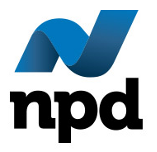Average U.S. Monthly Pay-TV Subscription Bills May Top $200 by 2020
Tuesday, April 10th, 2012
Pay-TV bills continue to increase by 6 percent, year-over-year, as consumer-spending power remains flat
PORT WASHINGTON, NEW YORK — According to information from NPD’s recent “Digital Video Outlook” report, 16 percent of U.S. households do not currently subscribe to pay-TV services. A sharp rise in housing vacancies due to the mortgage crisis alone has led to five million fewer U.S. households viewing pay-TV services. Total pay-TV subscriptions in the US have not declined much, due to bulk-service pay-TV contracts with apartment complexes and home owners associations that have allowed pay-TV operators to retain subscriptions in vacant homes.

“As pay-TV costs rise and consumers’ spending power stays flat, the traditional affiliate-fee business model for pay-TV companies appears to be unsustainable in the long term,” said Keith Nissen, research director for The NPD Group. “Much needed structural changes to the pay-TV industry will not happen quickly or easily; however, the emerging competition between S-VOD and premium-TV suppliers might be the spark that ignites the necessary business-model transformation of the pay-TV industry.”
Based on the latest information from NPD’s “Entertainment Trends in America” report, pay-TV cord cutters reported cancelling their subscriptions primarily because of economic considerations; however, they are still accessing TV programming from free-to-air broadcast, free Internet TV, as well as via lower-priced subscription video-on-demand (S-VOD) services, like Netflix.
“Despite the plethora of OTT options for movies and TV, most consumers want their pay-TV providers to be central and relevant to the acquisition and viewing experience,” said Russ Crupnick, senior vice president of industry analysis for The NPD Group. In fact 59 percent of pay-TV subscribers preferred having one single provider for their pay-TV services, compared to 21 percent who desired multiple providers, and 21 percent who expressed no preference. Sixty-two percent of subscribers wanted premium TV either delivered by their pay-TV provider directly, or from a service affiliated with their pay-TV provider. Only 20 percent of pay-TV subscribers were likely to cancel their pay-TV service, if they could get their favorite shows online.
“Pay-TV providers offer a convenient, one-stop shop for subscribers, and the majority of customers like it that way,” said Crupnick. “There is an open window for the industry to meet consumer needs and become to television what iTunes is to music; however, there is also a definite risk if pay-TV providers don’t capitalize on the opportunity — and soon.”
Information in this press release is based on NPD’s “Digital Video Outlook” report, which is based on quarterly electronic surveys of 1,000 consumer households in the U.S., as well as on information from NPD’s “Entertainment Trends in America” report, which surveys 10,000 consumers semi-annually.
Latest News
- Deutsche Telekom selects Broadpeak Cloud DVR solution for MagentaTV
- Nexxen empowers Australian advertisers using VIDAA ACR data
- TargetVideo integrates AI for video content categorization
- Meta opens Quest OS to third-party hardware makers
- Aferian to implement further cost reductions at Amino
- Paramount to exclusively represent SkyShowtime advertising sales